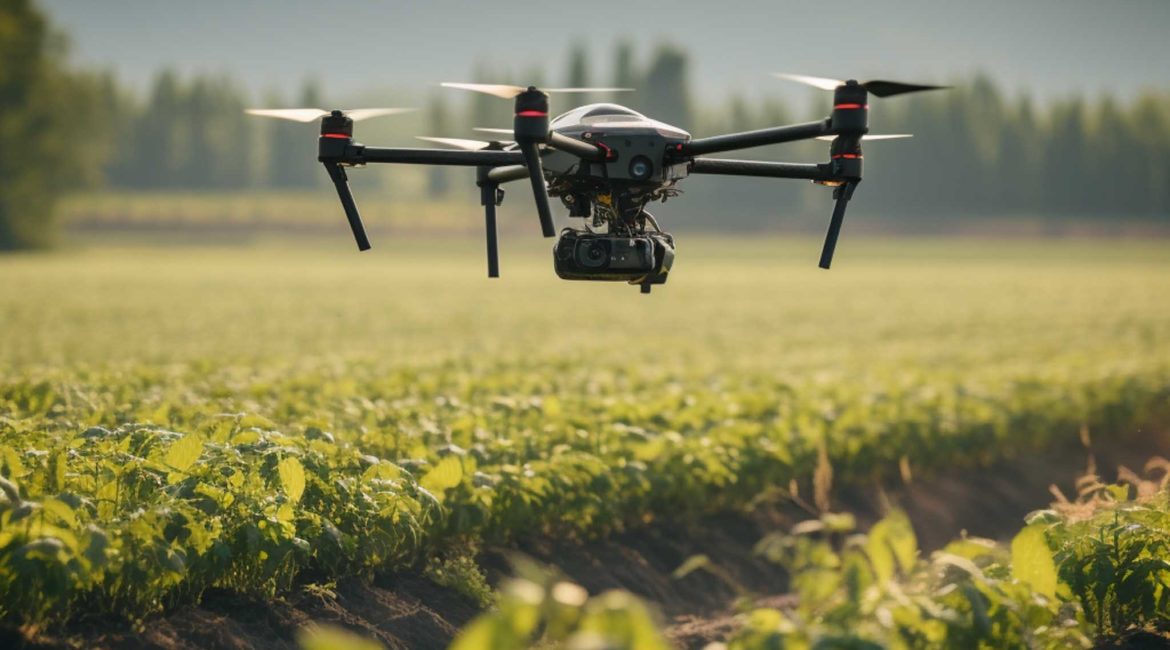Introduction
In recent years, the agricultural industry has witnessed a remarkable transformation with the introduction of drone technology. Drones, also known as unmanned aerial vehicles (UAVs), have revolutionized farming practices by offering farmers a range of benefits and capabilities. From crop monitoring to precision spraying, these aerial devices have become valuable tools in enhancing productivity, reducing costs, and improving sustainability in agriculture. This article explores the various applications and advantages of drones in agriculture.
Overview of Drones in Agriculture
Drones have become an integral part of modern farming practices due to their ability to gather real-time data and provide valuable insights. Equipped with advanced sensors and cameras, these aerial devices can capture high-resolution images and collect data on various aspects of the farm, such as crop health, soil moisture levels, and pest infestations. This data, when analyzed, allows farmers to make informed decisions and optimize their farming operations.
Crop Monitoring and Management
One of the primary applications of drones in agriculture is crop monitoring and management. By flying over the fields, drones can capture detailed imagery of crops, detecting early signs of stress, nutrient deficiencies, or diseases. This enables farmers to take timely action and address potential issues before they escalate. With the help of specialized software, the collected data can be analyzed to generate precise crop health maps, helping farmers identify areas that require attention.
Precision Agriculture and Soil Analysis
Drones equipped with advanced sensors can assess soil quality and composition more accurately than traditional methods. By analyzing the soil data collected by drones, farmers can optimize the distribution of fertilizers and adjust irrigation practices based on the specific needs of different areas within their fields. This targeted approach, known as precision agriculture, not only improves crop yield but also reduces the environmental impact of farming by minimizing the use of chemicals and water.
Irrigation and Water Management
Water scarcity is a significant challenge in agriculture, making efficient irrigation crucial for sustainable farming. Drones can play a vital role in optimizing water management by providing valuable insights into crop water requirements. By capturing thermal imagery, drones can identify areas of excessive or insufficient moisture in the fields, allowing farmers to adjust their irrigation strategies accordingly. This precise water management helps conserve water resources and improves overall crop health.
Pest and Disease Detection
Early detection of pests and diseases is essential for preventing crop losses and minimizing the need for chemical interventions. Drones equipped with specialized cameras and sensors can detect subtle changes in crop color, temperature, or reflectance, indicating the presence of pests or diseases. By identifying affected areas early on, farmers can take targeted measures such as localized spraying or pest control interventions, reducing the reliance on broad-spectrum chemicals and minimizing environmental impact.
Crop Spraying and Precision Application
Traditional methods of crop spraying often involve manual labor or large machinery, resulting in uneven distribution and excessive use of pesticides. Drones equipped with spraying systems can precisely apply fertilizers, pesticides, and herbicides, ensuring uniform coverage and reducing chemical wastage. This targeted approach minimizes the impact on non-target areas and improves the overall efficiency of crop protection practices.
Livestock Monitoring
Apart from crop-related applications, drones can also assist in livestock monitoring. They can be equipped with cameras and sensors to monitor livestock behavior, identify injured or missing animals, and assess grazing patterns. This data helps farmers improve animal welfare, identify potential health issues, and optimize herd management strategies.
Challenges and Limitations
While drones offer numerous benefits to the agricultural industry, there are also challenges and limitations that need to be addressed. These include regulatory restrictions, limited flight time and range, weather conditions, data management, and the initial investment required for acquiring drones and related equipment. Overcoming these challenges through technological advancements and supportive policies will further enhance the adoption and effectiveness of drones in agriculture.
Regulatory Framework for Drone Use in Agriculture
As the use of drones in agriculture continues to grow, regulatory frameworks have been established to ensure safe and responsible operation. These regulations address aspects such as pilot certification, flight restrictions, privacy concerns, and data protection. Compliance with these regulations is crucial to prevent misuse of drones and ensure the smooth integration of this technology into the farming ecosystem.
Future Trends and Developments
The future of drones in agriculture looks promising, with ongoing advancements and innovations. Researchers are exploring the integration of artificial intelligence and machine learning algorithms to enhance data analysis and automate decision-making processes. This will enable drones to provide more accurate and actionable insights, further optimizing farming practices and increasing productivity.
Conclusion
Drones have transformed the way agriculture is practiced by offering farmers unprecedented capabilities for data collection, analysis, and decision-making. From crop monitoring to precision spraying, these aerial devices have revolutionized farming practices, leading to increased efficiency, reduced costs, and improved sustainability. As the technology continues to evolve and regulations become more streamlined, drones will play an increasingly vital role in shaping the future of agriculture.





